This is the first article of a three-part series on how surf schools on India’s coasts are pivoting around sports education to bolster conservation efforts and community education as well.
“Ten, twenty years down the line, I want Bay Of Life to be an educational institute when it comes to the ocean,” Siddharth Chandrashekhar, the Head Coach at Kovalam’s Bay of Life Surf School and Ocean Literacy tells me. “Just like the CBSE does, I want to create a syllabus with which people can understand our beaches.”
Founded in 2011 by Showkath Jamal, a Chennai-based lawyer turned entrepreneur, Bay Of Life is the city’s first surf school, and also the first to be accredited by the Surfing Federation of India. That these classes take place in Kovalam, one of the many fishing villages dotting Tamil Nadu’s 1,076 kilometre-long coastline, isn’t by chance.
Located some 40 kilometres south of central Chennai, surfing, which has historically been practised in different forms by fishing communities here, has transformed the village into a national and international hub for the sport. The waters of Kovalam’s beaches are warm with a steady supply of surf, making them the ideal spots to teach surfing to beginners. Access to the area has been made easier by the development of the scenic East Coast Road National Highway, which stretches for around 800 kilometres along the Bay of Bengal between Chennai, up till Cuddalore. People from around the country now easily flock to Kovalam to enjoy its surf and beaches. Bay of Life is a significant player in this sports-tourism boom, holding classes for all age groups on different water sports, ranging from surfing, to ocean swimming, to kayaking, to scuba diving.
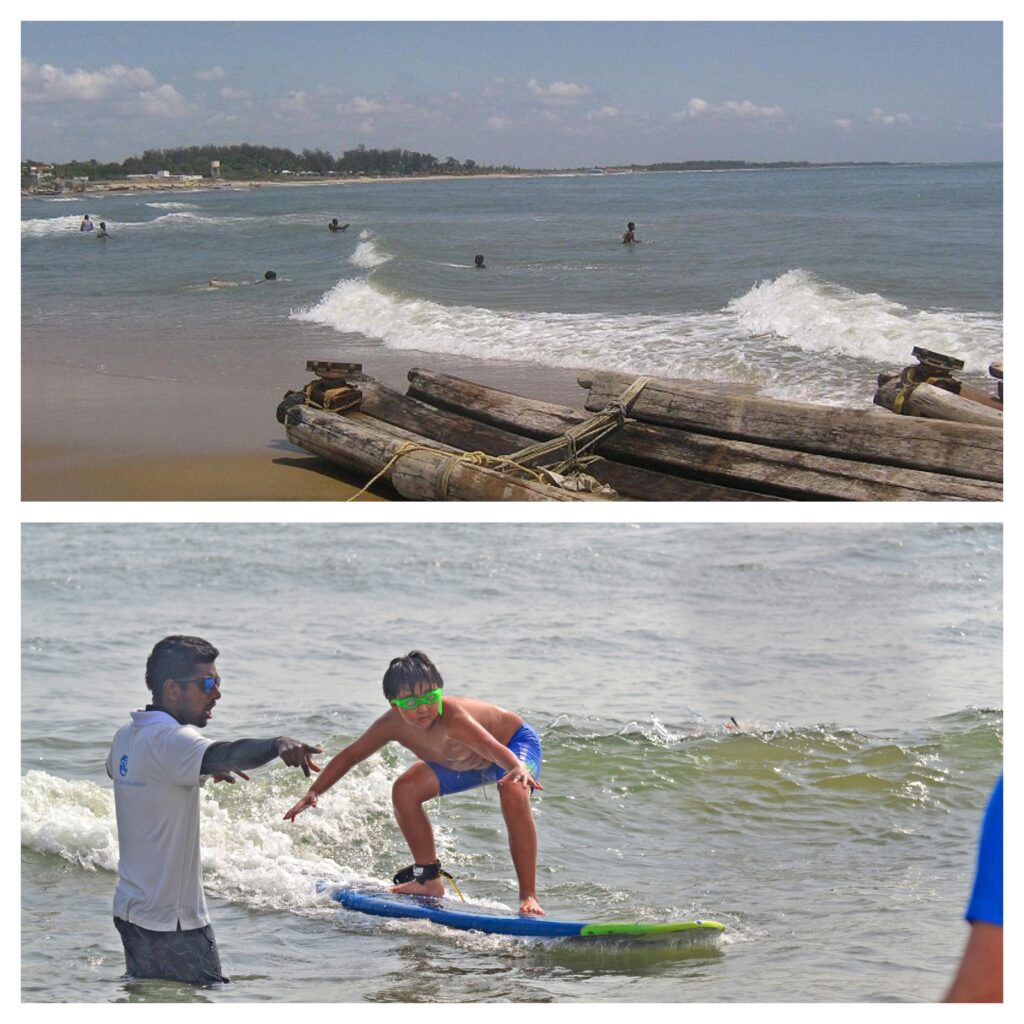
However, these activities don’t define what the school stands for: according to the website, “Bay of Life is a social organisation driving ocean conservation through sport and education.” This work towards conservation falls under the Bay of Life Foundation, founded in 2015. Siddharth, a trained zoologist born and bred in Chennai, has been with the organisation since 2012, and is the Scientist In Charge at the Foundation, leading the outdoor science programs for students. Educating children and adults alike in the different aspects of marine biology and research, form a core aspect of the foundation’s work.
From Surfing to Marine Conservation Education
Siddharth’s ambitions to create a pedagogy around the ocean, are rooted squarely in the school’s experiences teaching surfing in Kovalam overview the years. As the surfing hub grew, the difficulties of teaching ocean sports to Indians who weren’t familiar with the water became apparent. “Initially, we started as a surf school, and we also had science programs for kids as an aside,” says Siddharth. “A lot of foreigners would come and take classes with us, which was fun, no doubt. But a majority of people coming in from Chennai themselves, not the locals who lived here necessarily, were still hesitant about entering the ocean and ‘playing’ in it. How do you get people to surf, when they have no connection with the ocean in the first place? There’s no value at the end of the lesson then, if that’s the case.”
It is this realisation that sparked Bay of Life’s interests in ensuring that every student who attended the school’s classes learnt more deeply about the environment they were in. “We started teaching theory lessons about how the ocean ecosystem works, and even conducted them for the parents too, to make them feel more comfortable about sending their children here,” Siddharth says. “After that, children who came here during the summer for surfing, said they wanted to understand more about marine life sciences. So, from 2013 onwards, we started hosting more science programs for the children, teaching them about how the ocean ecosystem functions, how to spot different birds here, and how to swim safely in the ocean’s currents.”
That this is happening is unsurprising: Kovalam—if not Chennai at large—is a prime landscape to understand diverse ecosystems. The Guindy National Park—one of the few national parks located within a city—unfurls across 2.8 square kilometres of Chennai, alongside the densely forested 246 acres of the IIT Madras campus. Three rivers flow through the city—the Cooum, the Adyar, and the Kosathalaiyar—forming the lifelines of over 80 lakh people (as of 2011), and producing intricately populated biodiverse zones. Saltpans line the ECR near Kovalam, while the city is also home to five wetlands. As the city has expanded, almost all of these habitats have degenerated, some severely, thanks to state-led environmentally destructive development models—and always to the detriment of the populations dependent on them.
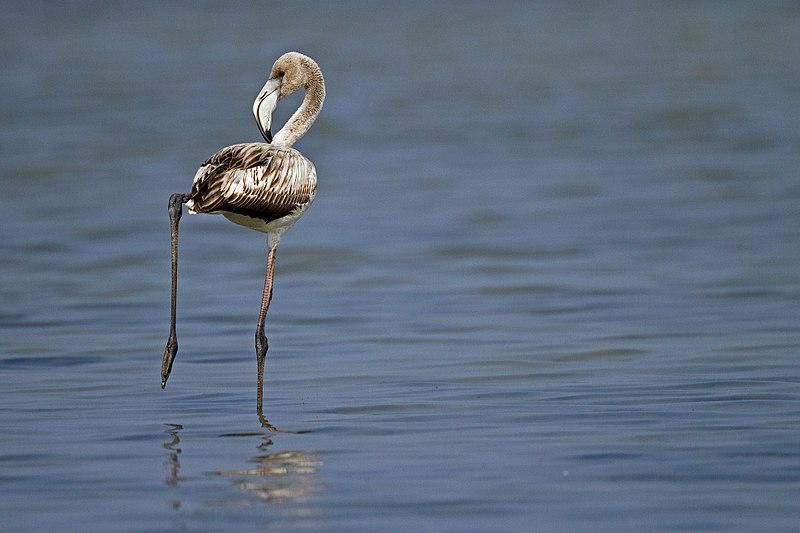
Through nature walks, workshops, and animal rescue work in the area, Bay of Life gradually pivoted away from just teaching surfing, into a new educational space with the younger students attending its courses. “That’s how the Bay of Life Foundation started, really. The original surf school is what sustains all the ocean monitoring activities we do through conservation and research. This is the direction we’re going in for the future. We have a multidisciplinary approach: you can study birds, mangroves, the river mouth, the ocean, the backwaters. There are so many ecosystems we can study in this one city, and we want more students to get involved in understanding them.”
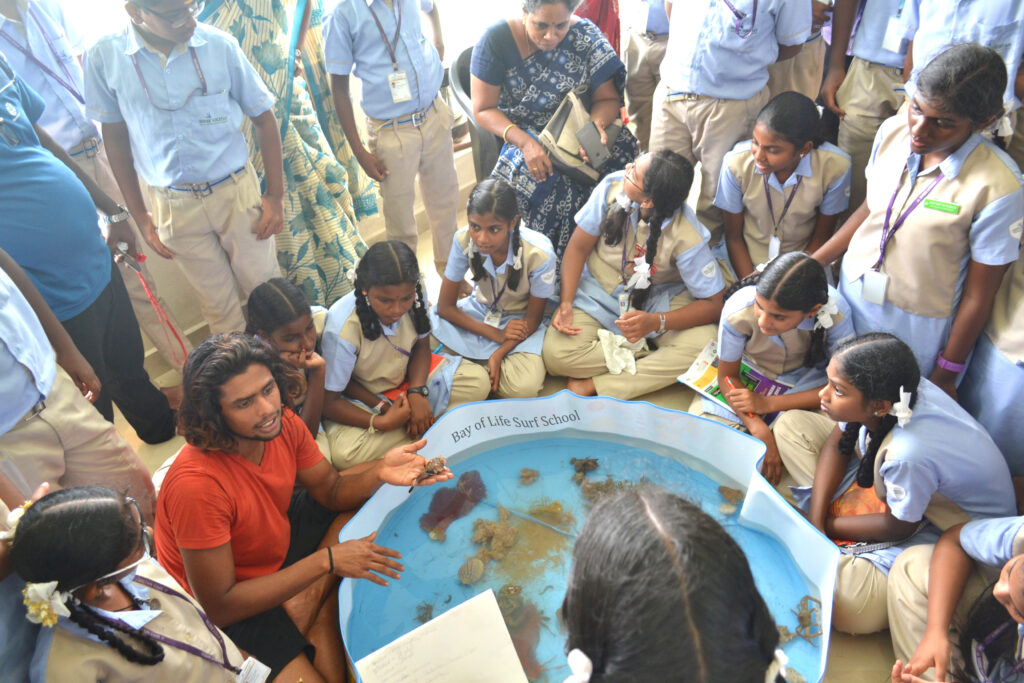
Towards Practice-Oriented Environmental Education
Siddharth is clear that this work falls under the remit of environmental education, that still remains underdeveloped and theoretical in schools. “Even though school education is absolutely necessary, they’ve never really been the solution to imbibing knowledge,” says Siddharth. “It’s not one person’s job to save the environment, it’s everyone’s equal job. And so, when we teach students about the ocean and the environment here, we teach by example—we show them the trash on the beach, but we don’t blame anyone. Instead, we try to explain the different ways in which it gets there.”
The other kinds of research the foundation is undertaking include studies on understanding artificial reef structures along Tamil Nadu’s coast, as well as by-catch analyses. Students come and observe how these studies unfold, in order to understand research methods and topics better.
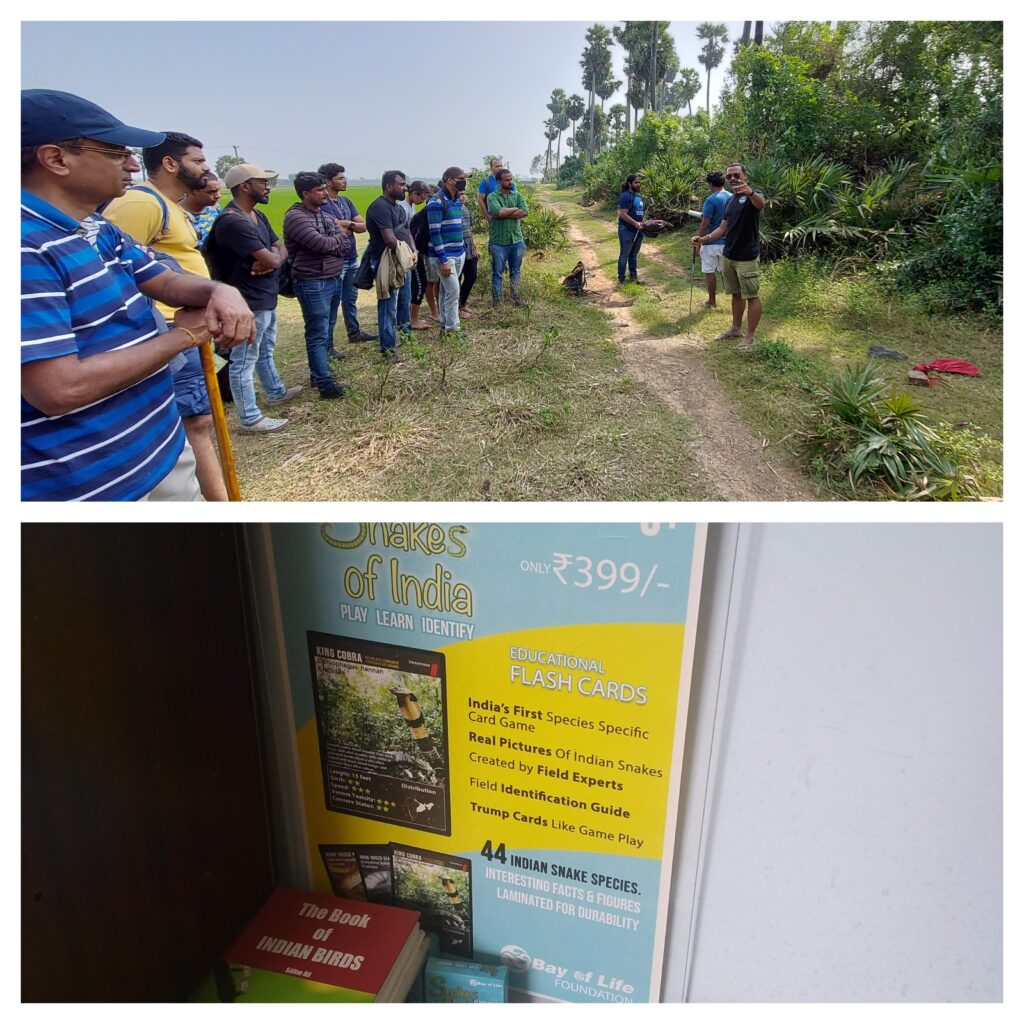
The end goal here seems to be developing the environmental consciousness of the students who come to the school to surf in a socially responsible way. “Promoting ‘conservation’ alone is a luxury for those who have their creature comforts in place—we cannot preach conservation to resource-deprived communities,” says Siddharth emphatically. “We have to aim towards balancing the economic needs of communities, individual environmental responsibility, and the conservation of Nature too. Then, we can arrive at a more practical understanding of conservation.”
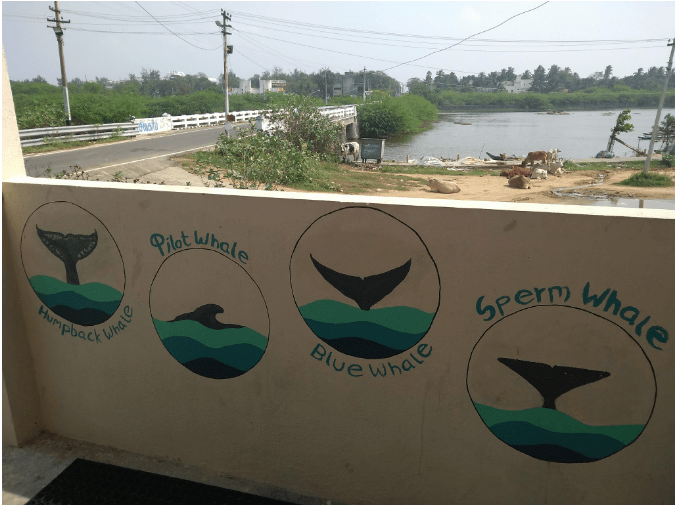
For Siddharth, this can only be achieved through practice-oriented education, one that can be leveraged through sports first. “We need to change the mentality towards individual responsibility too. That can come with kids. If they have a love for the ocean in their hearts, especially because of their time surfing with us and the pollution they might see, it will speak volumes in the future in their conservation efforts. Even if they grow up to be scientists, or lawyers, that consciousness might stay with them—they might implement a no single-use plastic policy in their office. That itself is a great first step, it’s what we need to collectively save the ocean.”
Featured image: The beach in Kovalam where Bay Of Life’s lessons take place. By Aarathi Ganesan.


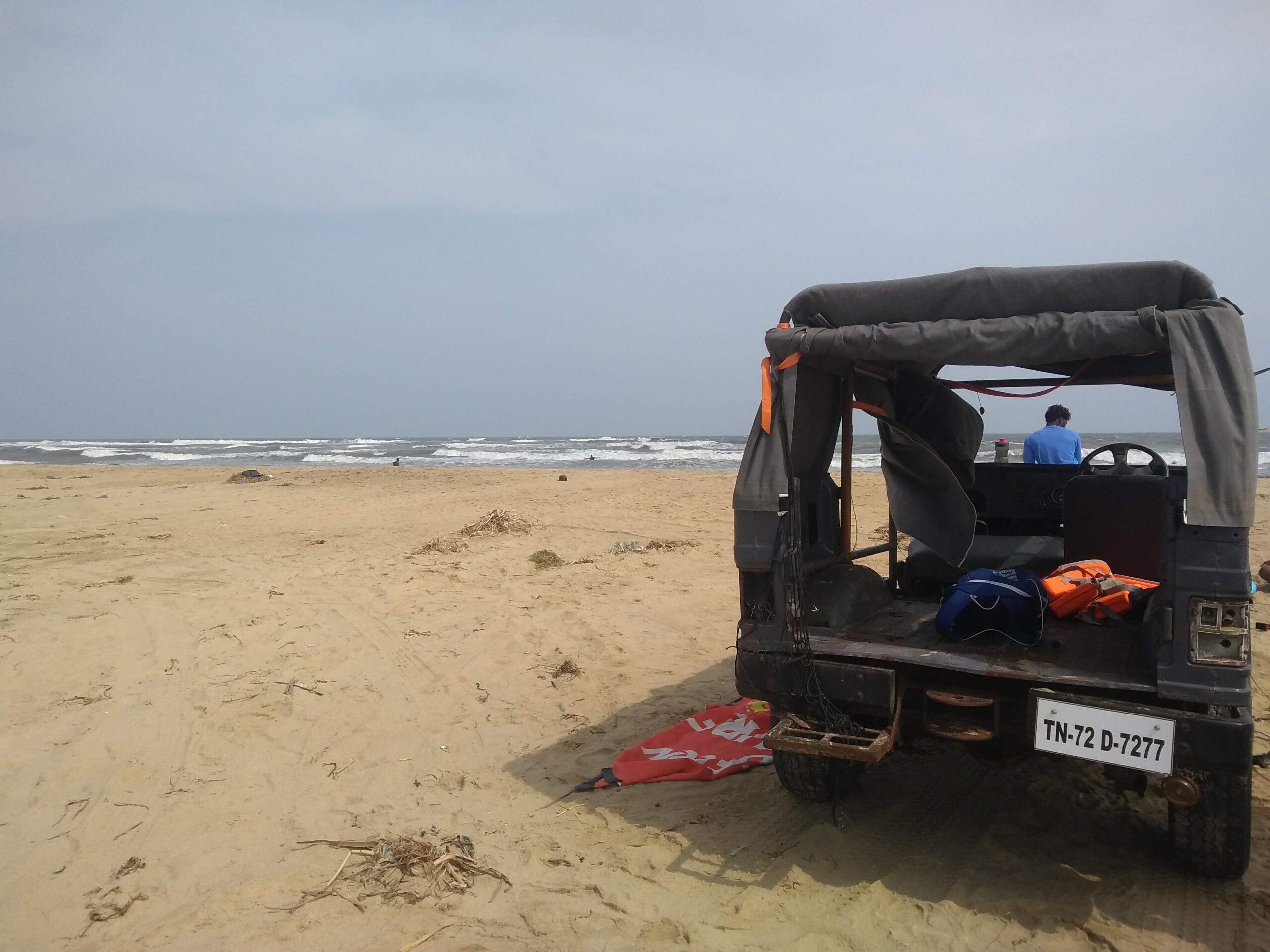




[…] This is the second article of a three-part series on how surf schools on India’s coasts are pivoting around sports education to bolster conservation efforts and community education as well. To read the first part, click here. […]